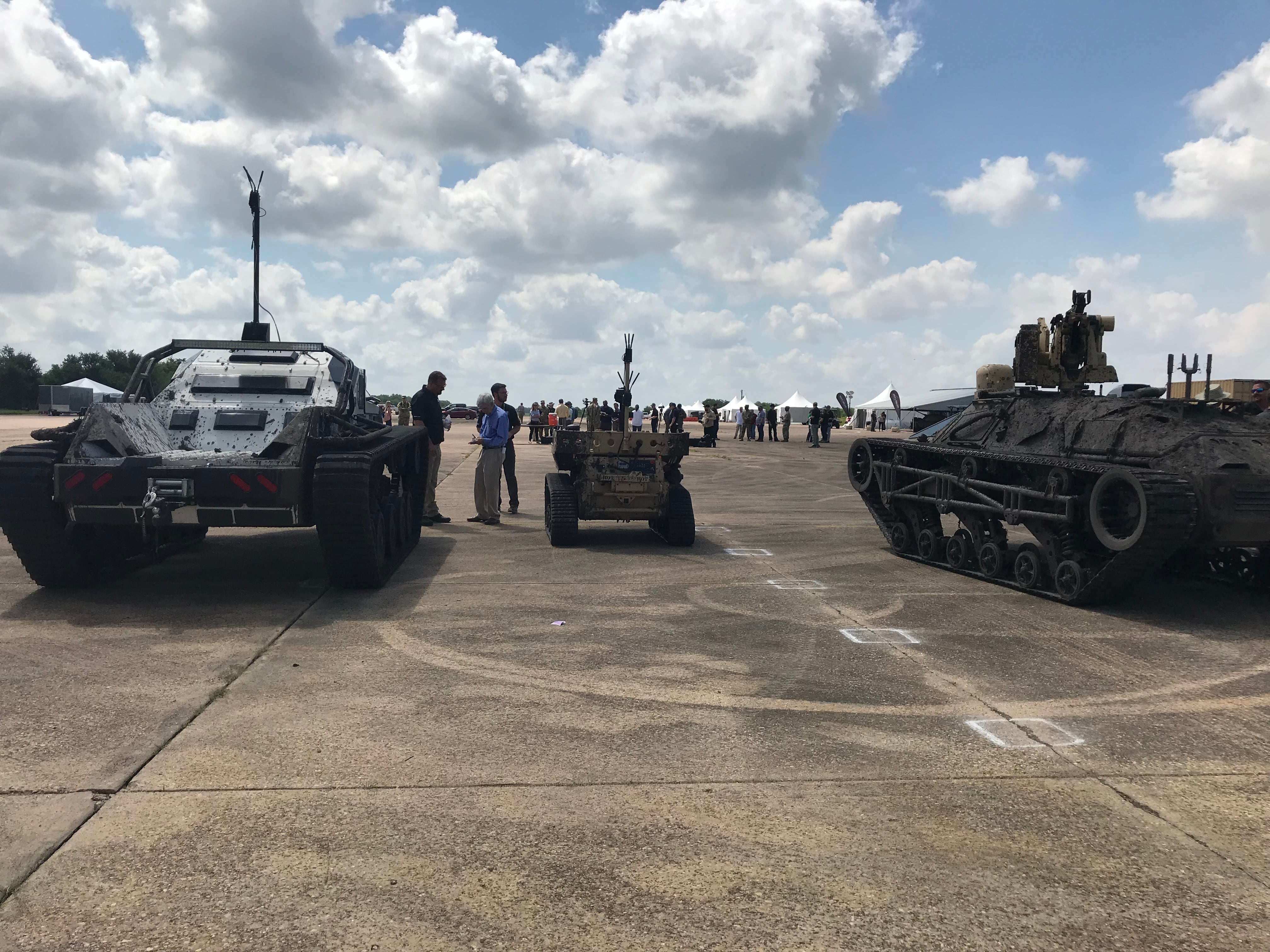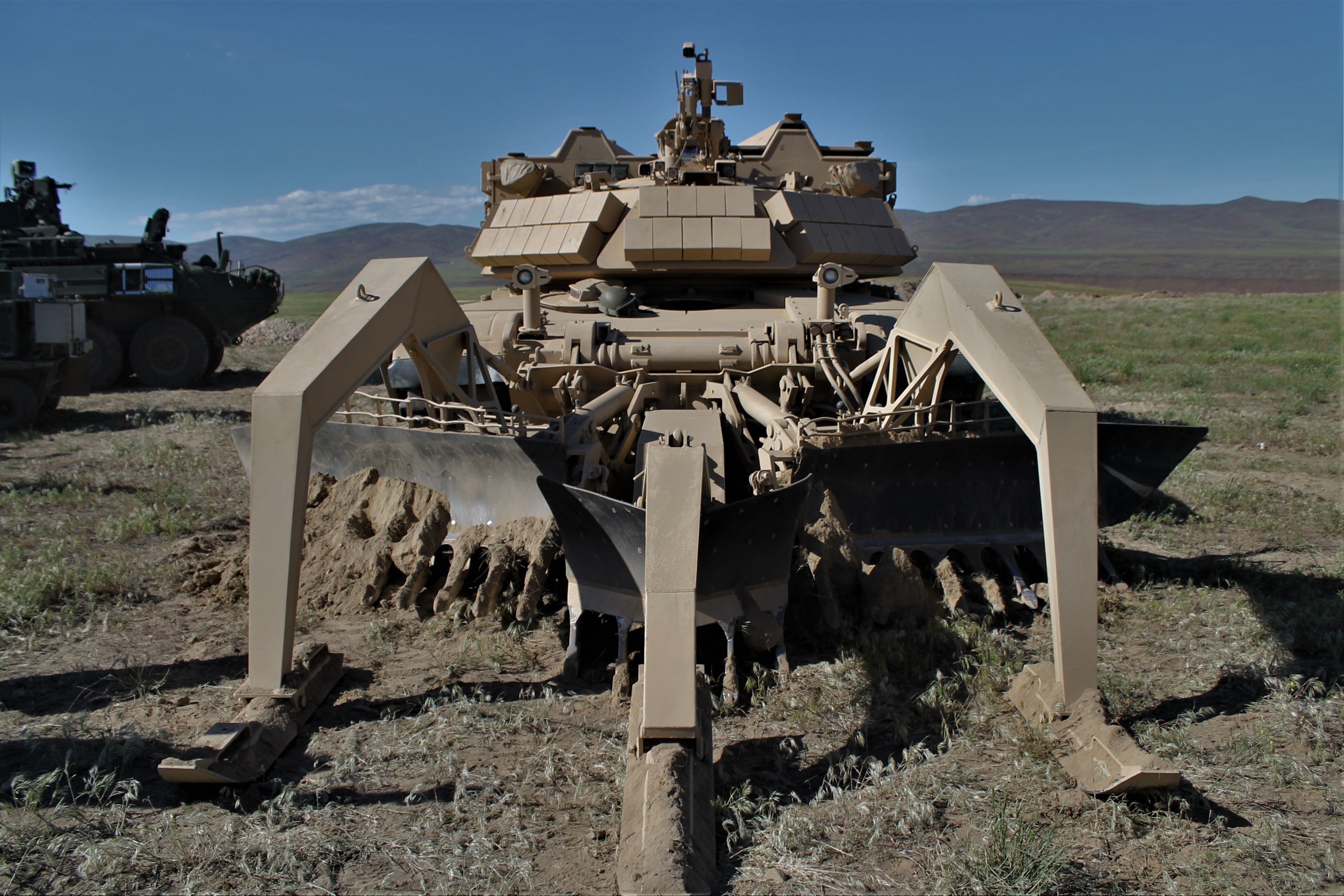WASHINGTON — The U.S. Army has taken receipt of its light and medium Robotic Combat Vehicle (RCV) prototypes from industry teams and is putting them through the paces this year ahead of a major company-level soldier assessment in 2022.
The service took delivery of the first of four RCV-Light vehicles from a QinetiQ North America and Pratt Miller team — which won the contract to produce the prototypes a year ago — in November 2020 with the other three arriving before the Christmas holiday, Alfred Grein, acting director and deputy executive director of Ground Combat Systems at the Army Combat Capabilities Development Command, said at the Association of the U.S. Army’s Global Force Next virtual symposium on March 16.
The RCV-L is a diesel-electric hybrid with a gross vehicle weight of no more than 8,500 pounds and a maximum payload of no more than 7,000 pounds, boasting a top speed of about 40 miles per hour, according to Grein.
The four prototypes were delivered to the Army’s Ground Vehicle Systems Center where a team began integrating the government-developed Robotic Technology Kernel (RTK) autonomy software onto those platforms, Grein said.
After a functional checkout, the prototypes were sent to Texas A&M University’s Rellis campus where, over the course of February, the team was able to pair them with a Mission Enabling Technology Demonstrator — or MET-D vehicle — to begin the manned-unmanned teaming process, he added.
While the Army is expecting to receive its RCV-Medium prototypes from a Textron, Howe & Howe and FLIR team starting at the end of April through May, the service took early delivery of a partially completed RCV-M in mid-February in order to begin integrating the RTK software.
RCV-M is also a diesel-electric hybrid with a gross vehicle weight of 25,000 pounds. The vehicle is equipped with a remotely operated 30 mm cannon and has a top speed of over 25 miles per hour, according to Grein.
RELATED

The service already conducted an RCV assessment at Fort Carson, Colorado, in 2020, but it was focused on heavy vehicles and used surrogates, so now it is preparing to conduct another soldier operational experiment at Fort Hood, Texas, from June through August of 2022 with its chosen prototypes for the RCV-L and RCV-M.
This year, both the RCV-L and RCV-M will go through shakedown testing at Camp Grayling, Michigan, from April through September.
“Upon successful shakedown, paired with our MET-D vehicle and the MUM-T network, it will be tested for its ability to control a Company set of RCVs consisting of 18 vehicles” — four RCV-Ls, four RCV-Ms, four RCV-Heavy systems (M113 personnel carrier surrogate) and six MET-D control vehicles, Grein said.
“All of that will be operated simultaneously,” he said.
The entire process will be tested at Camp Grayling before moving down to Fort Hood.
The vehicles‘ next stop will be Army Test and Evaluation Command for safety testing — both individually and combined with MET-D — in November before the big event in 2022. The testing should wrap up in May 2022, Grein said.
RELATED

The Fort Hood experiment will start with soldier training on the vehicles followed by situational training exercises and then into live-fire training exercises, he added.
“We know that these events are going to definitely help shape the future for Army robotic systems and the requirements in meeting those capability needs that we’ve been asked to do in terms of the application of robotic and autonomous systems,” Grein said.
The Army plans to host yet another experimentation for RCVs in 2024, but will likely make a decision to move its RCV-L out of technical maturation and into the engineering and manufacturing development phase in the second quarter of fiscal 2023. The service would do the same with the RCV-M program in FY24. The Army plans to award separate contracts for a lead systems integrator for each RCV program.
The service has said there is potential for an RCV-H program of record to fall significantly behind the light and medium RCVs.
Jen Judson is an award-winning journalist covering land warfare for Defense News. She has also worked for Politico and Inside Defense. She holds a Master of Science degree in journalism from Boston University and a Bachelor of Arts degree from Kenyon College.






